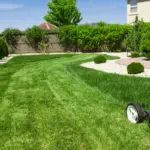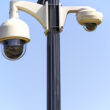When embarking on the journey of building a new home, one of the most critical systems that demand careful planning is the plumbing. A well-designed plumbing system ensures efficient water delivery and waste removal, which are essential for a comfortable, hygienic, and happy home. This article aims to provide a comprehensive guide to planning plumbing for new construction, tailored for individuals deeply interested in the subject.

Understanding the Basics
The Plumbing System Components
A residential plumbing system is typically divided into two subsystems: one that brings freshwater in and another that takes wastewater out. The incoming water is under pressure, allowing it to travel upstairs, around corners, or wherever else it’s needed. As water comes into your home, it passes through a meter that registers the amount you use. The main water shutoff, or stop, valve is typically located close to the meter. In a plumbing emergency, it’s vital that you quickly close the main shutoff valve. Otherwise, when a pipe bursts, it can flood your house in no time. If the emergency is confined to a sink, tub, or toilet, however, you may not want to turn off your entire water supply. Therefore, most fixtures should have individual stop valves.
Water Supply System
The water supply system routes municipal water from the street to your house, where it branches out to deliver the water to faucets, showers, toilets, bathtubs, and appliances such as the water heater, dishwasher, and washing machine.
The Hot Water System
The hot water system is a separate system that begins at the water heater. From there, it distributes hot water to the various fixtures and appliances that require hot water.
Drainage Systems
The drainage system includes all the piping within a private or public property that conveys sewage, rainwater, and other liquid waste to a point of disposal. It does not include the mains of a public sewer network or a private or public sewage treatment or disposal plant.
Designing Your Plumbing System
A well-designed plumbing system is essential for efficient and reliable building operation. Key considerations include compliance with local codes, proper sizing for capacity, and measures to ensure optimal water pressure and prevent cross-contamination. Accessibility for maintenance, the use of durable materials, and sustainability features contribute to longevity. Forward-thinking designs consider future expansions, and collaboration with other construction disciplines ensures integration.
Engaging a professional from Limcora Plumbing & Drainage or any reputable plumbing company is crucial for ensuring a plumbing system’s proper design, layout, and installation. These professionals possess the expertise to design and implement efficient plumbing systems while adhering to building codes and industry standards. Their services can help prevent leaks, water damage, and contamination risks. By relying on experienced plumbing professionals, individuals and businesses can ensure their plumbing infrastructure’s longevity, functionality, and safety.
Layout Considerations
When planning the layout, consider the following:
- Fixture Placement: Decide on the number and location of sinks, toilets, and showers or baths.
- Wet Wall Sharing: Strategize on sharing a wet wall between bathrooms and kitchens to save on construction and materials.
- Accessibility: Ensure that the main water shut-off valve is easily accessible.
Improper plumbing layout and installation can result in various issues, such as leaks, water damage, and inefficient water distribution. Incorrect structural design may cause low water pressure, fixture and appliance performance issues, and plumbing system blockages. Additionally, non-compliance with building codes can lead to legal and safety risks, while inadequate drainage may result in foul odors and mold growth. Contamination risks, including backflow of contaminated water, are also concerns.
Like Us on Facebook!
Plumbing in Different Home Areas
Bathroom Plumbing
- Fixtures: At least one sink, toilet, and shower or bath per bathroom.
- Piping: Separate hot and cold supply lines for sinks and baths/showers, a cold pipeline for the toilet, and a sewage drainpipe.
Kitchen Plumbing
- Appliances: Plan for dishwashers, sinks, water purifiers, and pot fillers.
- Flexibility: Unlike bathrooms, kitchens do not require a wet wall, offering more layout freedom.
Laundry Room Plumbing
- Complexity: Accommodate water, gas, and electric lines.
- Drainage: Include laundry or floor drains with a p-trap to prevent sewage gas from entering the home.
Installation and Inspection
Permits and Inspections
Before any work begins, obtain the necessary permits. These are crucial for ensuring that your plumbing system meets local building codes and standards. Inspections at various stages of the construction process are mandatory and help in identifying and rectifying potential issues early on.
Subscribe Us on YouTube!
Professional Installation
Hire a licensed plumber to ensure that the installation is done correctly. A professional will understand the nuances of local codes and can provide valuable insights into the design and execution of your plumbing system.
Maintenance and Upkeep
Regular Checks
Once installed, regular maintenance is key to ensuring the longevity and efficiency of your plumbing system. Schedule annual inspections and perform seasonal checks, especially before winter, to prevent pipes from freezing.
Emergency Preparedness
Familiarize yourself with the location of the main and individual shut-off valves. In case of a leak or burst pipe, knowing how to quickly turn off the water can prevent significant damage.
Conclusion
Planning the plumbing for a new construction is a complex but crucial task that lays the foundation for a well-functioning home. By understanding the basics, designing a thoughtful layout, ensuring professional installation, and committing to regular maintenance, you can achieve a plumbing system that serves your home efficiently for years to come.
For more detailed information on plumbing systems and professional guidance, Angi’s article on plumbing tips for new home construction is an excellent resource.
Remember, a well-planned plumbing system not only contributes to the daily comfort of your home but also to its overall value and longevity.




















